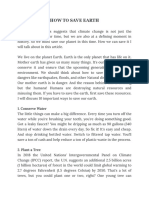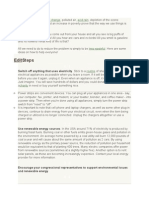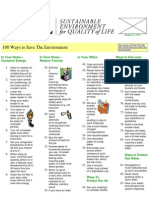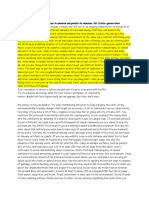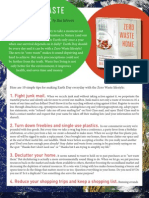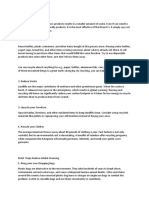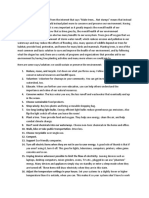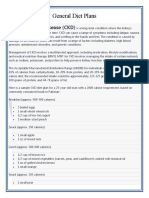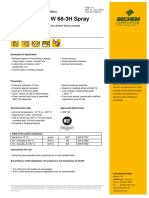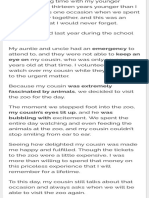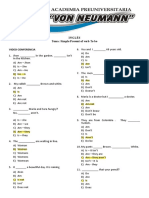0% found this document useful (0 votes)
35 views10 pagesHow To Help Save The Environment
The document provides practical tips for individuals to adopt an environmentally friendly lifestyle, emphasizing the importance of reducing waste, conserving resources, and supporting local ecosystems. Key suggestions include following the principles of reduce, reuse, and recycle; opting for local and plant-based foods; and engaging in community volunteer efforts. By making small changes, individuals can significantly contribute to environmental protection and sustainability.
Uploaded by
ghada elsayedCopyright
© © All Rights Reserved
We take content rights seriously. If you suspect this is your content, claim it here.
Available Formats
Download as PDF, TXT or read online on Scribd
0% found this document useful (0 votes)
35 views10 pagesHow To Help Save The Environment
The document provides practical tips for individuals to adopt an environmentally friendly lifestyle, emphasizing the importance of reducing waste, conserving resources, and supporting local ecosystems. Key suggestions include following the principles of reduce, reuse, and recycle; opting for local and plant-based foods; and engaging in community volunteer efforts. By making small changes, individuals can significantly contribute to environmental protection and sustainability.
Uploaded by
ghada elsayedCopyright
© © All Rights Reserved
We take content rights seriously. If you suspect this is your content, claim it here.
Available Formats
Download as PDF, TXT or read online on Scribd
/ 10


